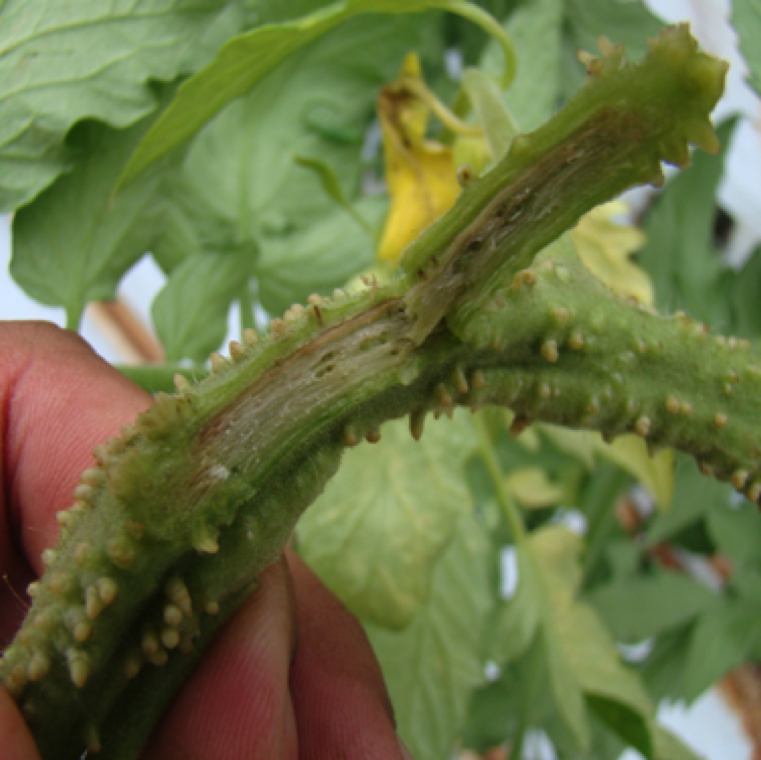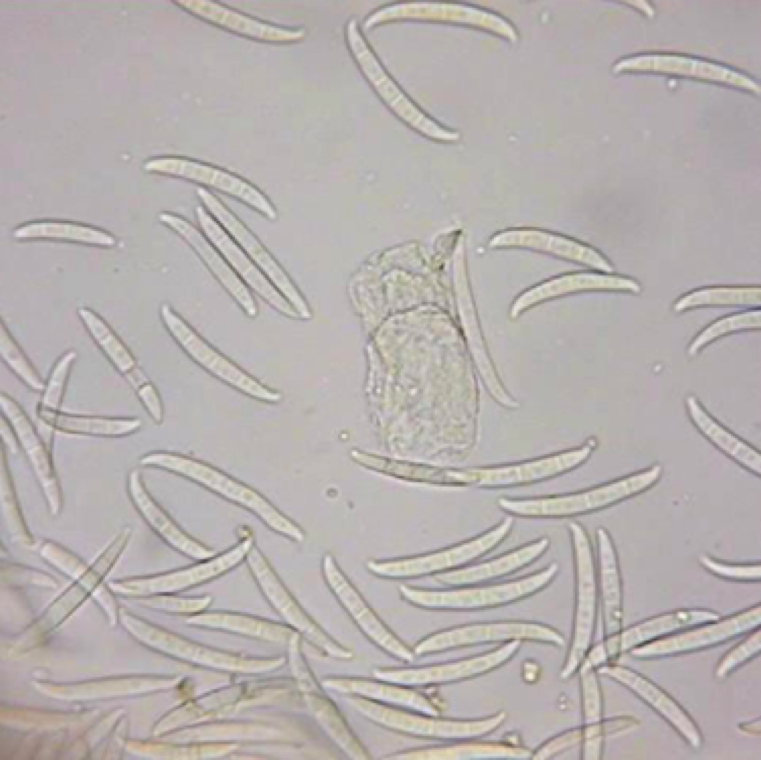

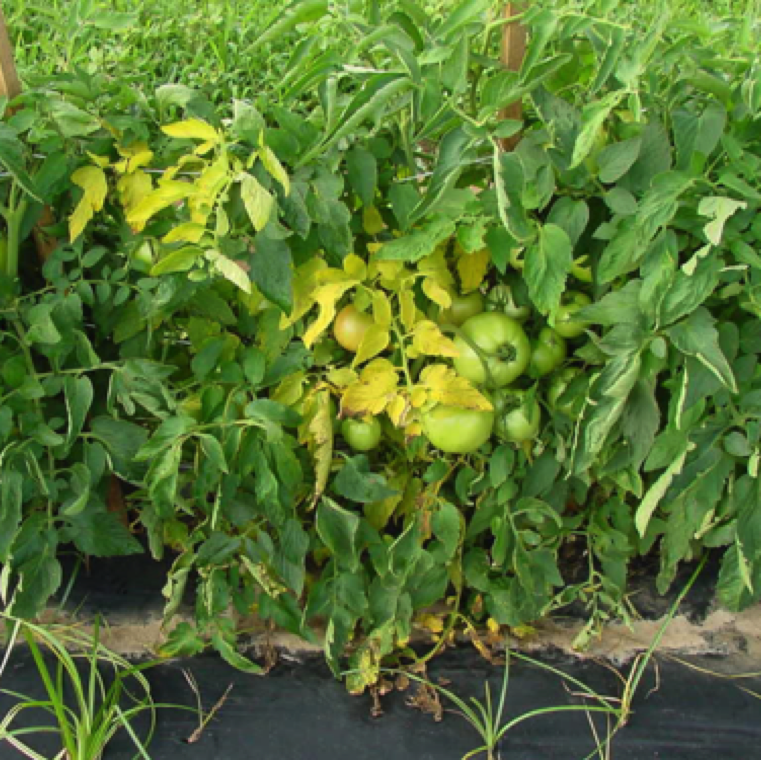
Fusarium wilt may causes yellowing symptoms initially on one side of a plant, but at later stages can infect the whole plant. Blockage of the vascular system is the primary cause of wilting.

The disease symptoms can advance rapidly causing yellowing of the entire plant. Wilting of parts of the plant and entire plant is another symptom.
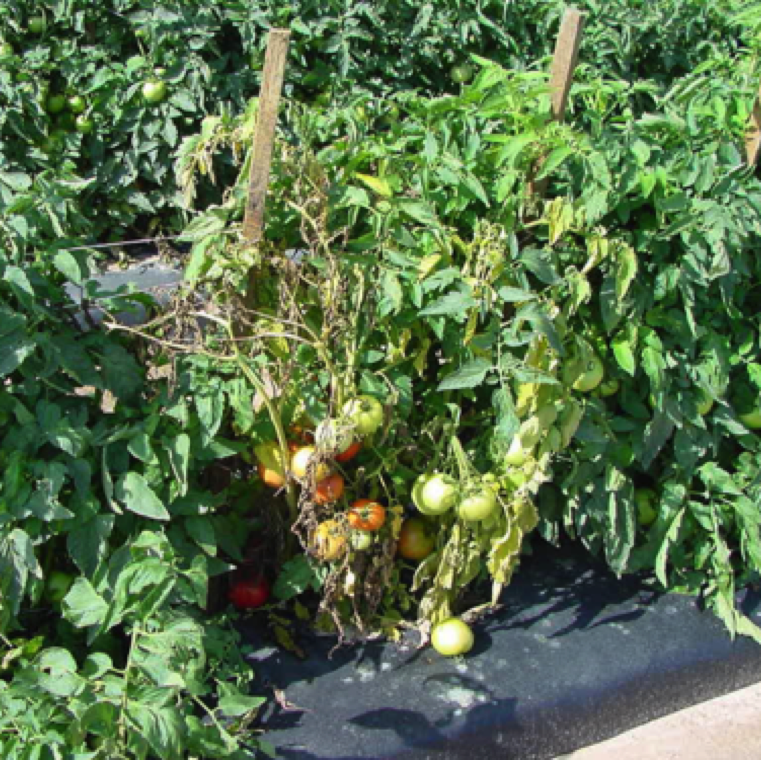
Blighting of leaves and wilting of part or entire plant can expose fruits to sunscalding thereby further affecting yield of affected plants in production.
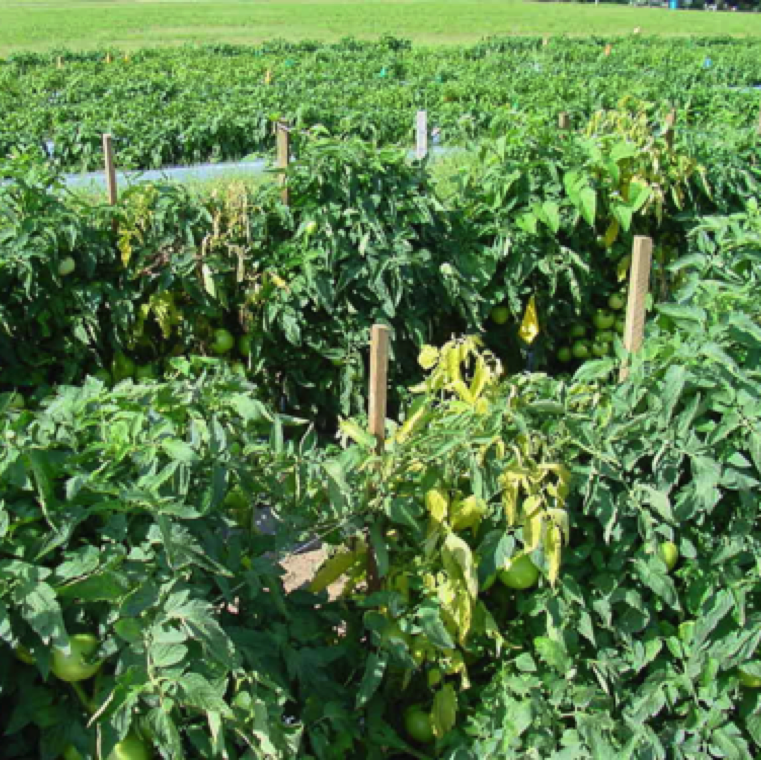
The disease symptoms of yellowing and wilting of plants tends to be spotty in the field and only rarely you may see entire fields with high disease incidence.
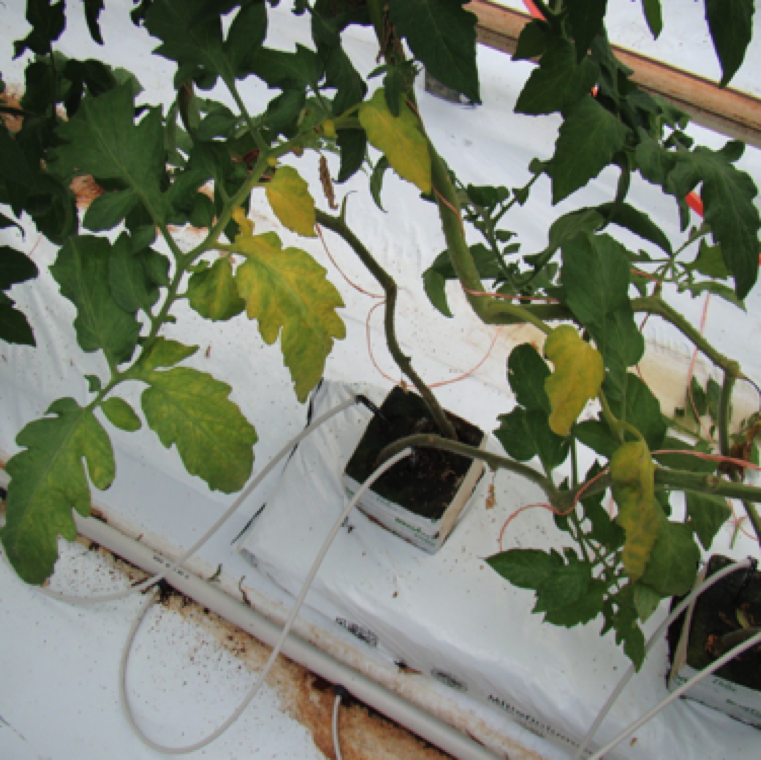
Fusarium wilt can be a severe problem in greenhouse production as most varieties used in greenhouse production are not resistant to Fusarium wilt.
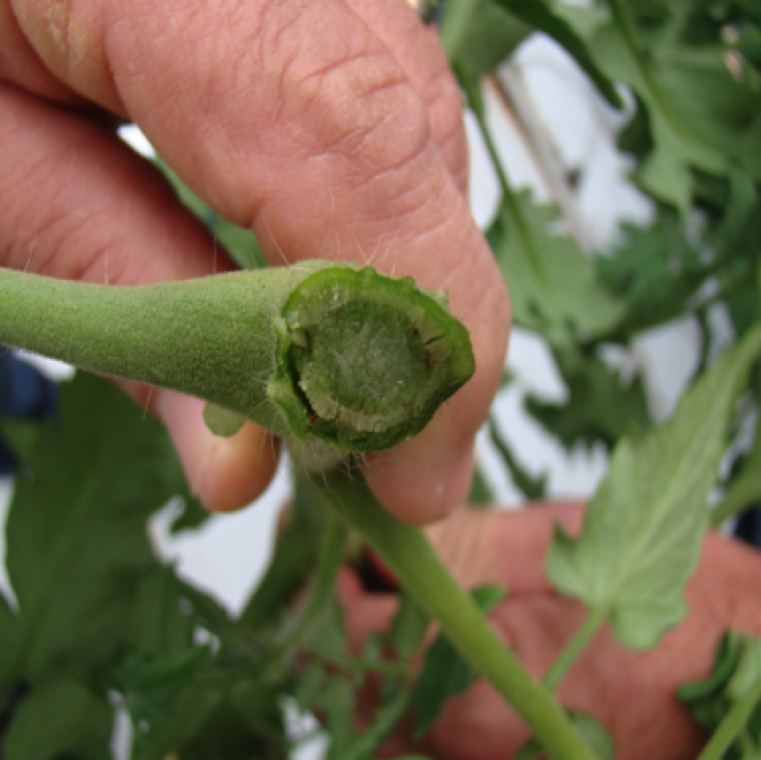
Discoloration of the vascular system indicating infection is a symptom associated with the disease, but is not confirmatory as other fungal and bacterial disease can cause similar symptoms.
FUSARIUM WILT
Fungal causal agent: Fusarium oxysporum f.sp. lycopersici
Tomato diseases
